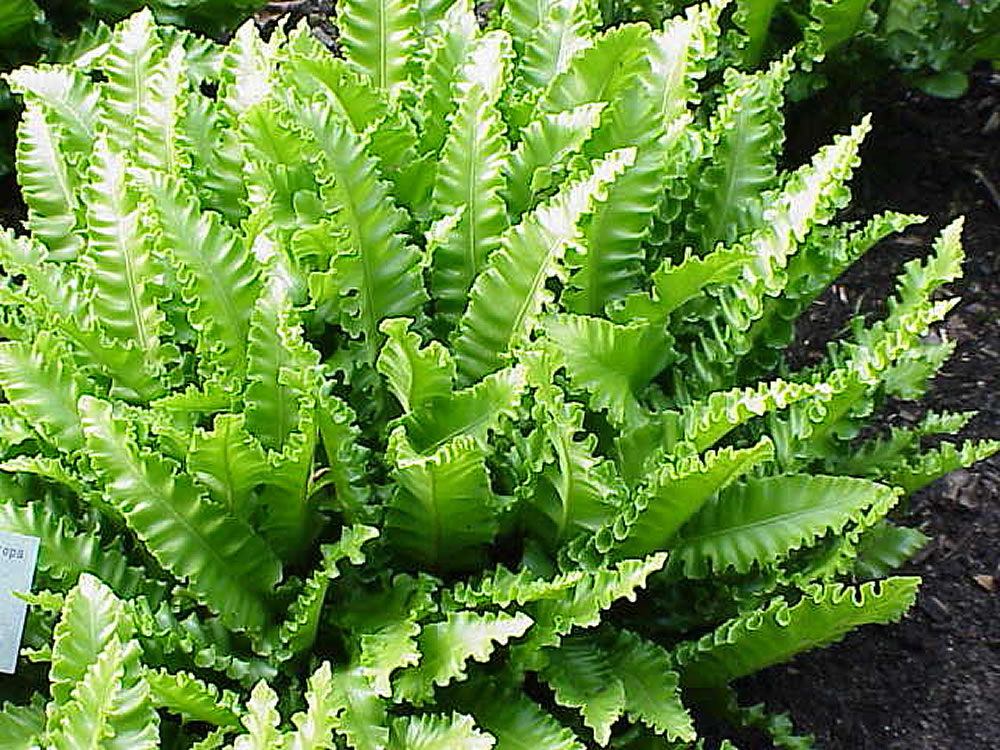Synonyms: Phyllitis scolopendrium (L.), Scolopendrium officinale
Other Common Names: American Hart's Tongue, Tongue Fern, Hind's Tongue, Buttonhole, Horse Tongue, God's-hair, Lingua cervina
Family: Aspleniaceae (Spleenwort Family)
Part Used: Fronds
Habitat: Moist, rocky areas in forests and shaded regions
Description
Scolopendrium vulgare is an evergreen fern easily recognized by its broad, long, strap-like, undivided dark-green fronds, which distinguish it from other native ferns. It often forms lush, dense masses in shaded, rocky areas.
The plant derives its name Scolopendrium because the arrangement of its spore clusters (sori) was thought to resemble the legs of a centipede (Scolopendra genus). These sori appear in paired, oblique lines on either side of the frond’s midrib and are covered by a double-layered indusium (protective membrane). Early growth stages reveal this characteristic structure under magnification. The plant’s root system is short, tufted, and stout, and it is known for being hardy and easy to cultivate.
Therapeutic Uses
Historically, Scolopendrium vulgare was highly valued by traditional herbalists and ancient physicians like Galen for its astringent and healing properties.
Medicinal Applications:
-
Regarded as one of the “five great capillary herbs.”
-
Used traditionally as an infusion for diarrhea and dysentery, thanks to its natural astringent effect.
-
An ointment prepared from its fronds was popularly used in country medicine for burns, scalds, and piles (hemorrhoids).
-
Taken internally in folk practices for Bright’s Disease (chronic kidney disease).
-
Prescribed for clearing liver and spleen obstructions and helping to dissolve gravelly deposits in the bladder.
Culpeper's Recommendations:
Renowned herbalist Nicholas Culpeper noted that it:
“Strengthens a weak liver, alleviates afflictions of the spleen and stomach, eases internal heat, and calms the heart's passions. Its distilled water helps stop hiccups, soothes palatal collapse, and controls gum bleeding when used as a gargle.”
Summary
Scolopendrium vulgare is a valuable medicinal fern with a rich history in European herbalism, used for its liver-protective, astringent, and wound-healing properties. Its unique frond shape and resilience make it both a popular garden fern and a respected plant in natural medicine.
Speech Disorder
A speech disorder, also known as a speech impairment...
ADHD
Attention-deficit / hyperactivity disorder (ADHD) is a...
Cerebral Palsy(CP)
Cerebral palsy (CP) is a group of neurological disorders...
Cancer
Cancer is a broad term for diseases where cells...




